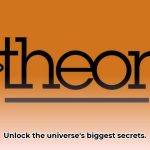Why can we vividly recall yesterday’s events but not predict what tomorrow holds? This universal experience leads us to contemplate the nature of time itself – specifically, why it appears to flow inexorably in one direction, from the past towards the future. This article delves into the science behind this phenomenon, known as the “arrow of time,” bridging everyday experiences with intriguing physics concepts. For a broader perspective on unifying theories, see [this related article](https://www.lolaapp.com/the-theory-of-everything-the-search-for-a-single-unifying-equation). Join us on an exploration of time’s mysteries, examining how the fundamental laws of the universe may shape our memories and influence our understanding of the unknown future. We will simplify complex ideas to make them accessible, regardless of your background in science. Prepare to uncover fascinating insights into time and your own perception of reality!
Decoding the Arrow of Time: Why the Past Is Remembered and the Future Remains a Mystery
Why does the past feel so tangible, filled with memories, while the future stretches out as an unwritten story? This isn’t merely a quirk of memory; it’s a central question in physics and our understanding of the universe. Scientists refer to this directional flow as “the arrow of time,” and it challenges our assumptions about how the world works. Let’s unpack this complex concept.
The Universe’s Bias: Entropy and the Inevitable March Toward Disorder
Picture a pristine, newly built sandcastle. What happens to it over time? It gradually crumbles, succumbing to the elements and the forces of nature. This decay embodies the concept of entropy: a measure of disorder. The universe, it turns out, has a strong preference for disorder.
The second law of thermodynamics, a cornerstone of physics, states that in a closed system, entropy tends to increase. Things naturally fall apart rather than spontaneously assemble. A dropped glass shatters; it doesn’t reassemble itself. This constant increase in disorder creates a natural asymmetry in time, giving it a direction, an “arrow” pointing from order toward chaos. While this explains a universal phenomenon, what’s the connection to how we perceive time?
Memory and the Past: How Our Brains Construct Reality
The link between the universe’s increasing disorder and our ability to remember the past lies in the intricate workings of our brains. The leading theory suggests that encoding memories increases entropy within our neural networks. Storing information requires energy, generating a small amount of disorder at a microscopic level. Think of organizing a messy desk – the act of organizing creates a bit of a mess in itself.
Our memories aren’t exact recordings of past events; they are reconstructions filtered through our individual biases, beliefs, and emotions. Our brains don’t store every detail, and what we recall might not perfectly mirror what happened. And because our brains are information processors, not clairvoyants, we can’t form genuine “future memories.” The future hasn’t happened yet.
Quantum Realm: Time’s Asymmetry at the Smallest Scales
The mystery deepens when we delve into quantum mechanics, the branch of physics governing the behavior of matter at the atomic and subatomic levels. Classical physics, like Newton’s laws describing the motion of planets or apples falling from trees, is largely “time-reversible.” In theory, you could rewind a video of these events, and the reverse action would still obey the laws of physics.
Quantum mechanics, however, reveals an asymmetry. The act of observing or measuring a quantum system fundamentally changes that system. This disruption introduces an element of irreversibility, leading some scientists to propose that this subatomic behavior could be the source of the arrow of time we experience on a grander scale.
Some researchers even propose that the arrow of time isn’t an intrinsic property of the universe but is dependent on the observer. That is, time might only appear to move forward due to our perspective. It’s a thought-provoking idea that pushes the boundaries of our understanding.
Multiple Perspectives, One Unsolved Puzzle
The relationship between the increase in entropy and our subjective experience of time continues to be a subject of intense investigation. Scientists are exploring diverse approaches to unlock the secrets of time. Key theories being explored include:
- Entropy increase during memory encoding: The creation of memories is an inherently “messy” process, but the precise microscopic details require further investigation.
- Information limits within memory: Our brains have finite storage capacity, but this alone doesn’t fully explain the thermodynamic arrow of time.
- Observer-dependent time’s arrow: This intriguing concept posits that the direction of time is tied to the observer’s perspective, but it demands more evidence and challenges core principles of physics.
The Ongoing Search for Time’s Enigma
The arrow of time remains a captivating puzzle, intersecting physics, the workings of our minds, and the very essence of reality. It represents a journey of ongoing exploration. While we might not possess all the answers, continued research and discoveries in the human mind and the universe around us bring us closer to unraveling this ancient mystery. Today’s daring theoretical speculations could very well become tomorrow’s accepted truths.
How does quantum decoherence shape our subjective perception of the arrow of time?
Why is it that we can access memories of the past but not glimpses of the future? This asymmetry is a fundamental puzzle. While the fundamental laws governing the universe appear indifferent to the direction of time, our everyday experience certainly is not. Could quantum decoherence hold a key to understanding this disparity?
Unveiling Decoherence: The Quantum Eraser in Action
Imagine a perfectly balanced coin spinning in the air, embodying a state of superposition – both heads and tails existing simultaneously. This is akin to a quantum system before decoherence takes hold. The very moment the coin lands, the superposition collapses, and we see a definite outcome: heads or tails. In the quantum realm, this transition is driven by decoherence.
Decoherence arises from the unavoidable interactions between a quantum system (like an electron) and its surrounding environment. These interactions cause the system to lose its quantum “coherence,” its ability to exist in multiple states at once. The system’s wave function, which describes the probabilities of all its possible states, becomes entangled with the environment, effectively “erasing” the system’s past quantum possibilities and solidifying a specific outcome.
The Arrow of Time: Decoherence and Irreversibility
The irreversible nature of decoherence mirrors the relentless increase of entropy (disorder) observed in the classical world. Our memories, or more accurately, our brains’ internal states, undergo irreversible changes as they interact with the environment. Decoherence effectively erases the quantum potentialities that could have constituted our past, leaving us with the specific, deterministic outcomes that we observe and remember.
Entropy’s Crucial Role
Entropy is fundamentally a measure of disorder within a system. The second law of thermodynamics dictates that the entropy of a closed system invariably increases with time. As quantum systems undergo decoherence, information about their past states becomes dispersed into the surrounding environment, leading to an increase in disorder and making it exceedingly difficult to reconstruct the system’s history.
Alternative Theories: Seeking a Coherent Understanding of Time
To further your understanding, consider the following:
- Quantum systems begin in a state of superposition, existing in multiple states. Decoherence brings this to an end, forcing a single outcome.
- Decoherence, driven by interactions with the environment, renders quantum states irreversible.
- The process of decoherence mirrors the increase in entropy that defines the thermodynamic arrow of time.
While quantum decoherence offers valuable insights, the mystery of time’s arrow continues to be actively debated and researched by scientists. Some propose that the universe began in an exceptionally low-entropy state, which would explain the increase in entropy observed in our observable universe and its role in the perception of time. Other theorists suggest that the arrow of time is an emergent property, arising from complex interactions within systems rather than being a fundamental law of the universe.
Quantum Measurement and the Arrow of Time: Unveiling Decoherence and the Emergence of Irreversibility
Why can we readily recall yesterday’s events but not foresee those of tomorrow? This fundamental asymmetry in our experience of time, often referred to as the “arrow of time,” has perplexed scientists for centuries. It is intricately linked to the seemingly irreversible nature of many processes we observe, such as a dropped egg inevitably shattering. But what if our comprehension of this irreversibility, especially at the quantum level, remains incomplete?
Challenging the Usual Explanation: Entropy and Irreversibility
The second law of thermodynamics asserts that entropy, a measure of disorder or randomness, always increases within a closed system. Therefore, a shattered egg won’t spontaneously reassemble, and this increase in disorder is conventionally cited as the cause of the arrow of time. However, this explanation is an oversimplification.
Quantum Mechanics: A Counterpoint to the Conventional View
Quantum mechanics presents a challenge, as its equations are time-symmetric, functioning equally well whether time runs forward or backward. How, then, can we reconcile this symmetry with the apparent irreversibility that pervades our macroscopic world? This is where the exploration of “Quantum Measurement and the Arrow of Time: Decoherence and the Emergence of Irreversibility” becomes crucial.
Decoherence: Bridging the Quantum and Classical Divide
One key concept here is decoherence. In reality, virtually no system exists in perfect isolation. A quantum system will inevitably interact with its environment, and this interaction effectively washes away quantum superposition, forcing the single system into a definite, classical state. This process constitutes decoherence, and it plays a critical role in the emergence of the classical world we perceive from the underlying quantum realm.
The Markov Approximation: A Deeper Examination
The Markov approximation serves as a tool for understanding open quantum systems. According to recent research, a symmetrical application of the Markov approximation, treating both past and future equally, results in time-reversal symmetric equations of motion. This highlights that apparent irreversibility is not inherent to the approximation itself but rather emerges from how it is applied.
Reconsidering Irreversibility
This does not invalidate the second law of thermodynamics. Instead, it suggests a subtle distinction between irreversibility and time-reversal symmetry at the microscopic level. The ostensible irreversibility in our daily experience stems from the immense number of particles involved, which drastically reduces the probabilities of reverse processes occurring (even if theoretically possible).
Implications Across Quantum Computing and Beyond
These findings challenge certain assumptions used in quantum computing models. For example, they suggest the possibility of developing time-symmetric quantum algorithms. Moreover, they urge further investigation into the deeper connections between the microscopic and macroscopic arrows of time, potentially yielding fresh insights into cosmology and fundamental physics.
Key points related to the arrow of time:
- The arrow of time is our subjective experience of time’s unidirectional flow.
- The second law of thermodynamics provides the standard explanation for the arrow of time.
- Decoherence plays a pivotal role in the transition from the quantum to the classical realm.
The Role of Memory Systems in Time Perception: Bridging Episodic and Semantic Memory for a Subjective Arrow
How do we perceive the flow of time and why can we access memories of yesterday while being unable to peek into tomorrow? The answer lies in the intricate interplay of our brain’s memory systems. Here’s a breakdown of what you need to know:
- The once-rigid distinction between episodic and semantic memory is blurring as they interact and overlap.
- Both memory types rely on widespread brain networks, often activating similar regions during recall.
- Insights from neurological disorders highlight the dependence and complex interplay between these memory systems by exhibiting separate impairments and shared vulnerabilities.
Reframing the Boundaries: The Dynamic Relationship Between Episodic and Semantic Memory
For decades, the prevailing view held a clear separation between episodic memory (memories of personal experiences) and semantic memory (general knowledge about the world). However, this once-sharp division is being increasingly challenged by research revealing a much more nuanced relationship. Episodic and semantic memories interact extensively within the brain, and their neural underpinnings often exhibit considerable overlap.
An Intertwined Tapestry of Memory
Our recollection of a personal event invariably incorporates background knowledge and contextual information, implying a constant interaction between episodic and semantic components. This subtle blending is critical to our subjective perception of time, shaping how we perceive the past and how it influences our present. This ongoing integration enables us to place our experiences within a coherent narrative of our lives.
Clinical Insights from Memory Disorders
The study of neurological disorders, such as Alzheimer’s disease and semantic dementia, offers a unique perspective by revealing dissociations and overlaps in memory impairment.
Consider this: Alzheimer’s disease primarily affects episodic memory, hindering the ability to recall personal experiences, while semantic dementia selectively impairs semantic memory, eroding general knowledge. Understanding the specific clinical manifestations of these disorders can help refine theoretical models of memory and improve diagnostic tools.
Charting the Future of Memory Research
The overarching challenge in memory research is to develop a unified theoretical framework capable of explaining the complex interactions between these memory systems. Ultimately, such a framework will pave the way for more effective treatments for a wide range of memory disorders.
- Unlocking Flight: The Wright Brothers’ Engineering Triumph:A Meticulous Process - August 4, 2025
- Churchill’s Wilderness Years: From Exile to Prime Minister - August 4, 2025
- Unlocking Time’s Secret: The Arrow of Time, Past vs. Future Insights - August 4, 2025













